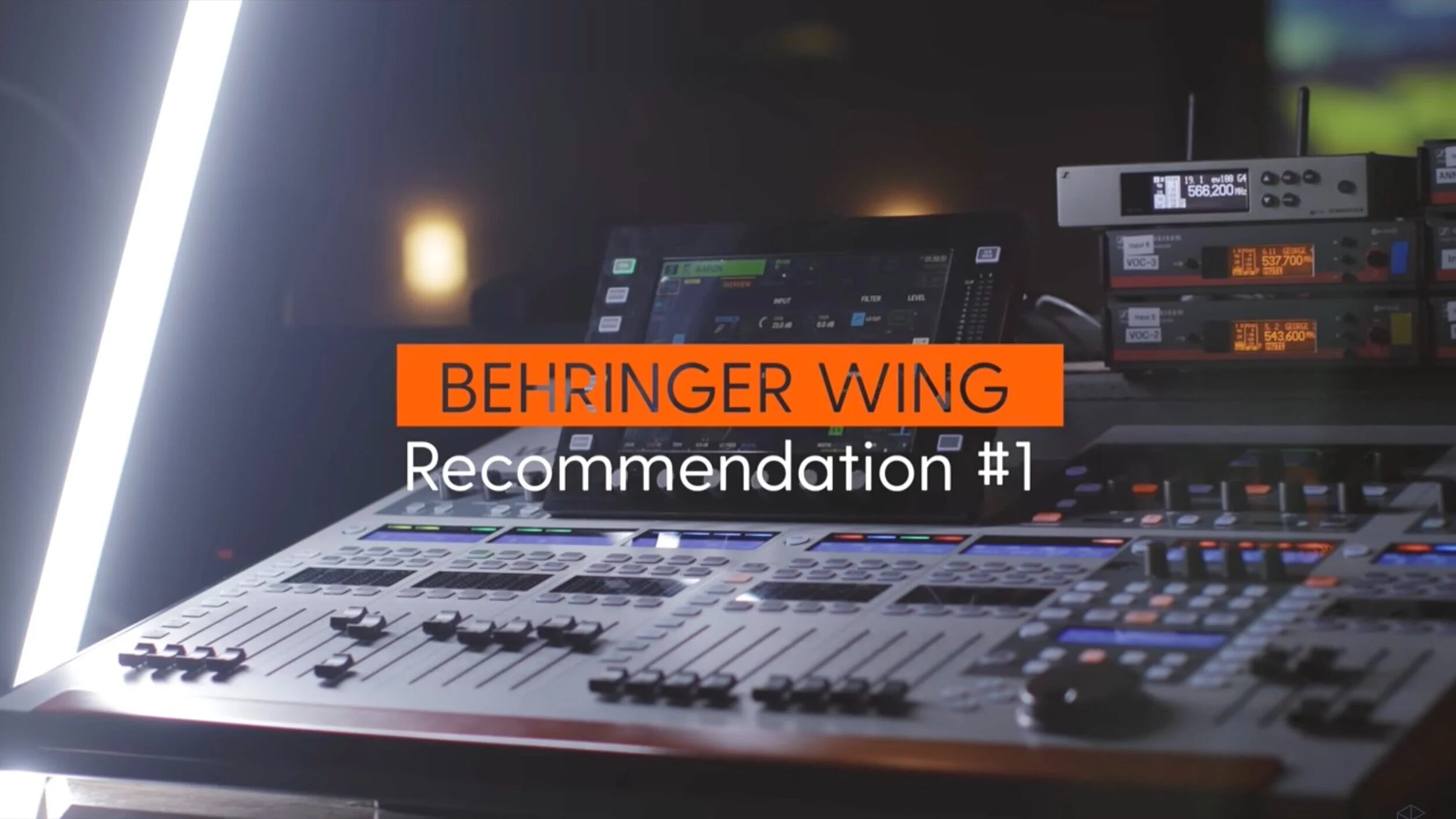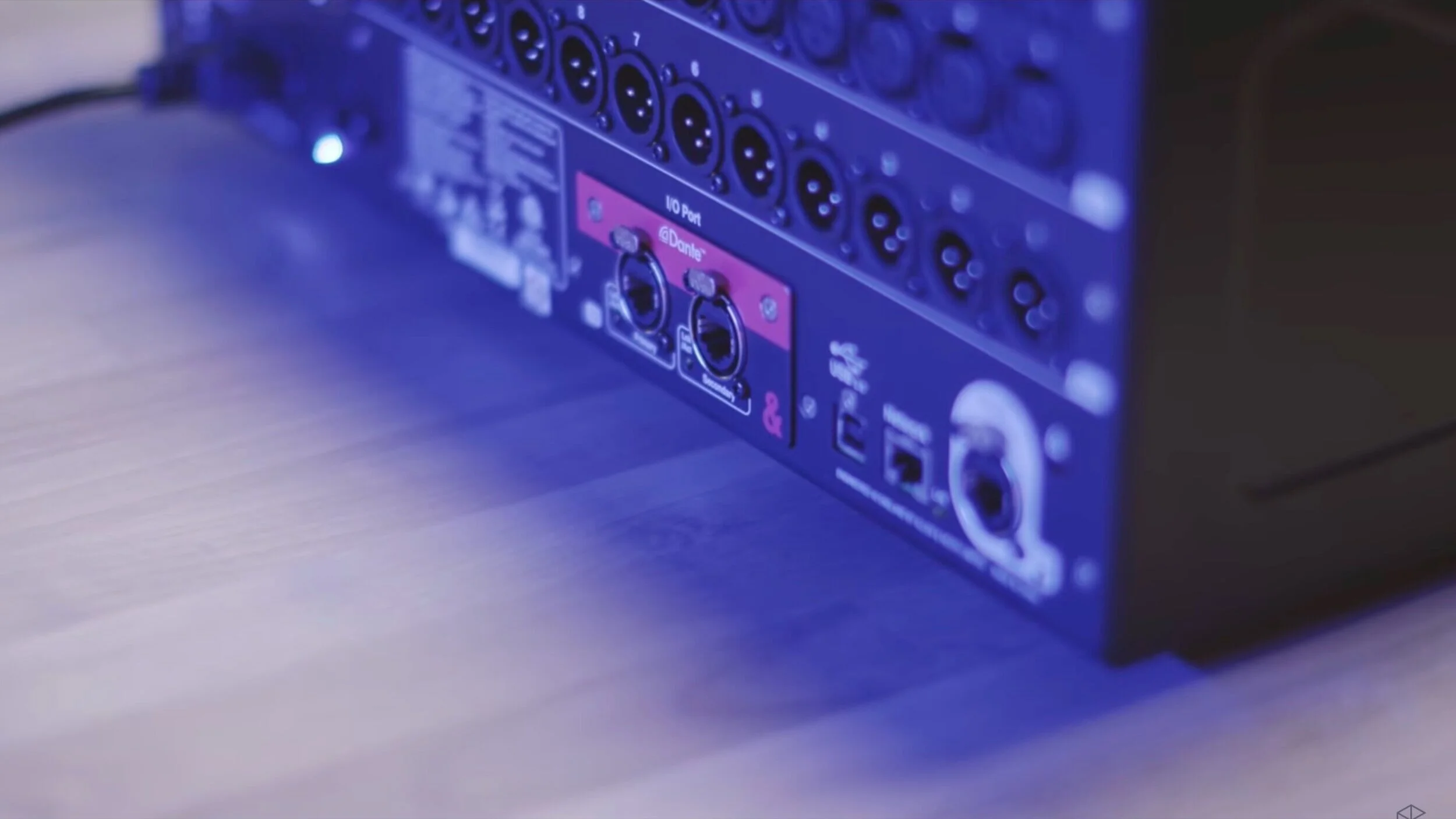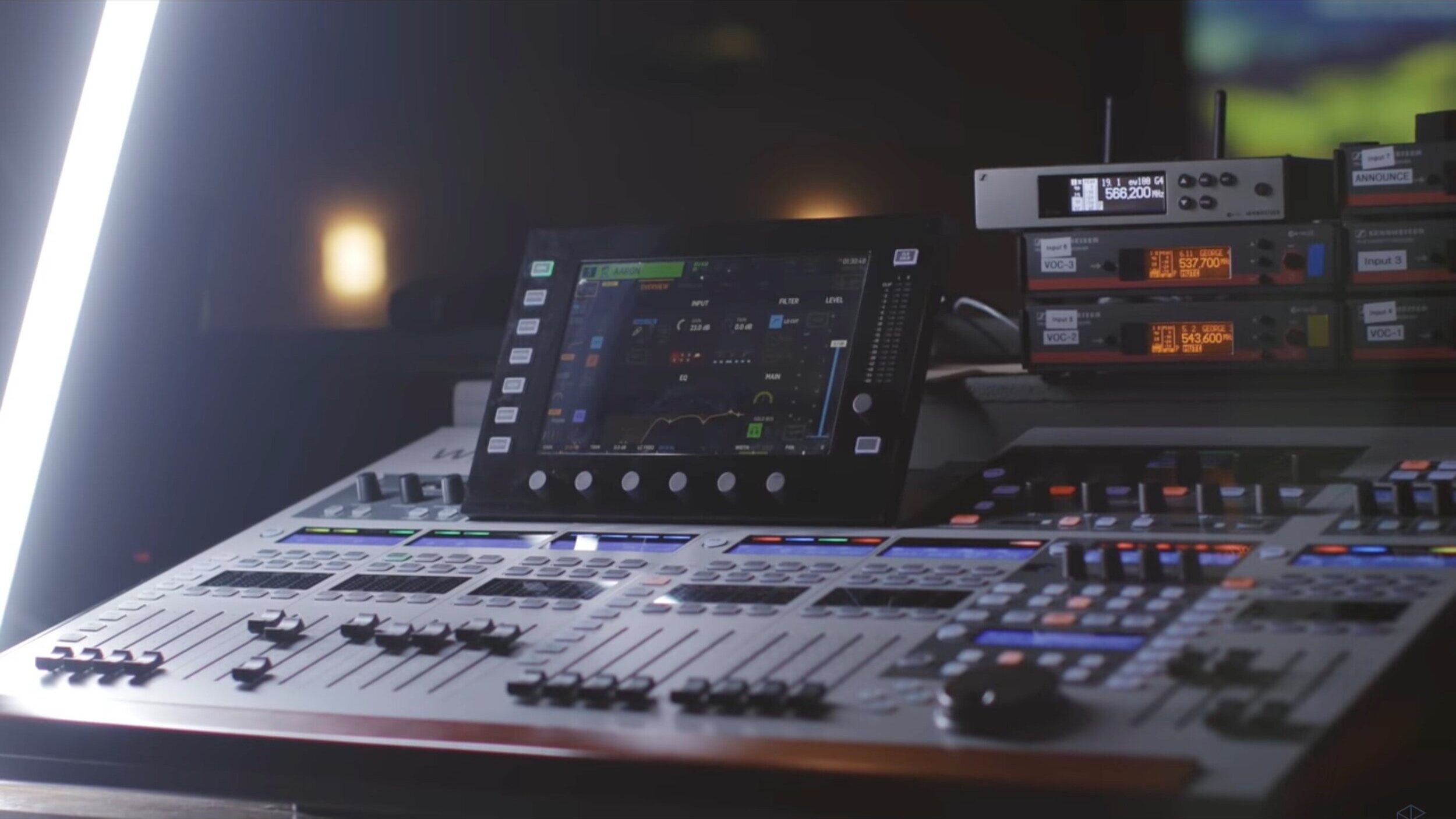When thinking about leading Worship, there is literally no leading happening without vocalists being heard clearly. Although it may seem the solution is to plug in any old mic and turn up the gain, there is more to it than that. Churches who want to improve their vocal microphone setup should dig into this post and the video above.
This post is going to provide a walkthrough of Jake’s vocal microphone setup he is using at his church. Here’s the roadmap.
Hardware
Microphone: Telefunken M80
Mixer: Behringer WING
How to Process Vocal Mics
Step 1: Gain
Step 2: Low Cut/High Pass Filter
Step 3: EQ
Step 4: Compressor
Step 5: Pitch Fix Plugin
Step 6: Effects (Reverb and Delay)
It’s also worth noting that there are so many great demonstrations of these steps that you can view through the YouTube video above. So, to see any of these steps in action, check out the video.
Before we begin, check out our Beginner’s Guide to Church Sound online course. It’s a step-by-step guide that’s great for helping new sound techs in a church. We’ll instruct you on the anatomy of a sound system, how all the gear works, microphone types, etc. We also cover the essentials of processing audio so you can understand all the concepts in this post. You and your team will gain instant access through enrolling, and your worship ministry is guaranteed to be improved.
Hardware
Vocal Microphones
With a vocal microphone, it’s important to have a handheld dynamic microphone. It could be wireless, but wireless mics will cost more, especially for a quality one. Jake is a fan of good old-fashioned wired mics. For years, he’s been using the Shure SM58 or Beta58.
The Shure mics work well. They're great standard microphones and, when processed correctly, they'll sound great every time.
But recently Jake wanted to make an upgrade, so that’s when he picked up a Telefunken M80 dynamic microphone. It comes in at around $250, and it's not super expensive like a Neumann condenser microphone. It’s a great middle of the road option that provides a bump in quality while keeping a reasonable cost.
Behringer WING
Finding the right microphone is important, but if a church doesn’t have a great mixing console to process the audio, then buying a good microphone is pointless. It would be like buying great off-road tires and putting them on a minivan. In order to get the most out of a vocal mic, get a mixing console that can process its audio well.
That’s where the Behringer WING comes in, which is one of Churchfront’s recommended consoles. For the rest of this post, the audio processing will be done on a WING.
How to Process Vocal Mics
Routing the Mic to the Mixer
Once the sound waves from the voice enter the microphone, it goes through an XLR cable straight into the stage box, which is on stage. Jake’s church has an S16 Behringer stage box. The signal from that box goes to the mixing console over AES-50.
Step 1: Gain
The foundational concern of processing vocal audio is adequate signal coming into the channel on the sound console. Apply too much gain, and there will be too much noise with overcompensation happening in other areas. Too quiet, and there obviously won’t be enough of a signal to work with.
For vocal mics, a sweet spot is to meter around -12 db. This depends on many factors, but it’s a helpful rule of thumb.
One of those factors that could change the gain setting is mic placement in relation to the PA speakers. Ideally, the mic should be behind the speakers. In Jake’s setup, his microphones are right next to the speakers, which isn’t ideal. He’s able to make up for that gain with digital trim, however.
step 2: Low Cut/High Pass Filter
Adding a low cut or high pass filter (HPF) removes the lower end frequencies of the vocal audio. Jake likes to cut out the low end up to around 290 Hertz. This means that any frequencies under 290 Hz will be cut out, causing the vocal audio to “cut” through the whole mix better. In other words, Jake explains that worship vocals shouldn’t sound like a radio host or Joe Rogan. Removing the low end sounds nice, pleasing, and it makes everyone happy.
For a demonstration, be sure to check out the YouTube video above.
step 3: Equalizing (EQ)
Equalizing tunes the vocal audio to sound pleasing within the entire frequency spectrum. On any digital sound console, navigate to the EQ settings, and the HPF should already show itself as active. The art of EQing any instrument or voice is one that takes practice and skill. It’s far too big of a feat to explain how to EQ well in this post, so check out Churchfront’s Beginner’s Guide to Church Sound. For those who understand EQ, here’s the snapshot for for how Jake sets up his voice EQ. Jake cut his voice by 6 db at 576 hz, cut 3 db out of 3k hz, and boosted the 10k hz frequency by 1.5 db.
EQing vocal audio this way gets rid of the low junk, the mid box-y sound, adds some sparkle to it, and takes away the harshness. This is a crucial step.
step 4: Compressor
Now that EQ is done, it’s compressor time.
In a nutshell, the compressor makes the loud parts quiet and the quiet parts louder. It’s so important to not distract the church with inaudible or over-the-top singing, so compressors eliminate those potential distractions.
Here’s how Jake compresses his voice.
The first setting is the ratio. Jake chooses a 5:1 ratio. Next, is the threshold, which is at minus 29 decibels. Next is the makeup gain, which is important because if a voice is being compressed by five decibels, it’s important to make up for that at five decibels to smooth out the sound.
Jake’s attack is set around 10 seconds so that his voice can cut through the mix but not cut through the too much before the compressor comes down.
It’s best to put the compression after the EQ so that the signal that’s being compressed is the actual and desired EQ-d voice.
Pitch Correction
On consoles like the WING, pitch correction is available as a plugin. This is so much easier than attaching a computer and tuning voices through a Digital Audio Workstation (DAW) like Ableton Live. Don’t have a newer console that has this feature included? Be sure to check out Waves’ autotune software and watch our How-To video on how to use it.
For churches with consoles like the WING, using pitch correction helps eliminate distraction. Don’t think T-Pain in the worship service. These corrections are small and subtle, but when used well, a plugin like this can do wonders for the vocal mix.
Reverb
Reverb gives voices a sense of space, even in smaller venues where the effect of a larger venue just isn’t possible. In other words, adding a reverb effect helps people feel like they're in a bigger space. It sounds pleasing.
Jake is using a plate reverb with 2.6 of decay and pre-delay at 65 milliseconds. It’s good to have the pre-delay setting a little higher so the reverb doesn’t make the voice muddy. That way, the reverb is kicking in 65 milliseconds later, causing some helpful separation.
Delay
Lastly, delay can be helpful when used sparingly. Too much, and it gets really distracting and frustrating. The best way to enable delay is to have the tap tempo assigned to an assignable button on the console and assign the delay (and reverb, too) to a DCA or custom-assignmable fader so the audio volunteer can simply push up the delay and the voice keeps going. To hear how this works out, check out Jake’s demonstration in the YouTube video above.
Wrapping Up
This concludes how Jake sets up his vocal mic, and we hope this knowledge can bless your own church’s audio mix and worship ministry, overall.
Remember to check out Churchfront’s Beginner’s Guide to Church Sound in order to be fully equipped to run a church’s audio well, especially if any of this post was overwhelming or unfamiliar. This is an in-depth course that works through all the fundamentals of mixing audio. Check it out.































